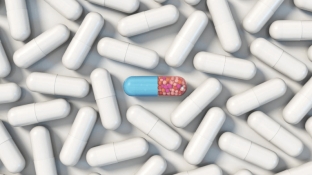A rare person now does not use any drugs at all – whether it be contraceptives, vitamins or headache remedies, not to mention ongoing therapy for chronic diseases. Since every year doctors use more & nbsp; combinations of various drugs, there has been a significant increase in the number of drug interactions that either reduce the effectiveness of one of the drugs taken, or lead to some other undesirable effects. Estet-portal.com proposes to consider the most common drug interactions and ways to prevent them, which should be remembered by aesthetic medicine professionals.
Don't forget to ask patients about nutritional supplements and fruit juices
Recently, all kinds of nutritional supplements with herbal ingredients have become very popular, people especially like the content of St. John's wort in them. This herbal remedy really contains many active biocomponents, in particular hyperforin, and is not in vain considered to be a fairly effective antidepressant, but at the same time, its interaction with drugs can significantly reduce the effectiveness of the latter – and in some cases it becomes critically important for life and health.
When interacting with hyperforin contained in St. John's wort, the blood concentration of the following drugs decreases:
- oral contraceptives – threatens unwanted pregnancy;
- antiretroviral drugs – for example, we are talking about drugs taken by AIDS patients;
- Antineoplastic drugs – effectiveness may decrease or resistance may develop;
- antidepressants – possible development of serotonin syndrome.
Another, harmless at first glance and often used product – grapefruit juice, which, when taken with certain drugs, can significantly increase their concentration in the blood.
The components of grapefruit juice have an inhibitory effect on enzymes: which are responsible for metabolic processes in the intestine.
Grapefruit juice should not be taken with drugs such as felodipine and amiodarone, simvastatin and lovastatin, cyclosporine and nifedipine.

Some drug interactions that are hazardous to patient health
Among other drugs that are often prescribed to patients, and which you should definitely ask about when prescribing therapy after cosmetic procedures or plastic surgeries, it is necessary to indicate some antibiotics, statins, anticoagulants, antihypertensive drugs. Let's look at some unwanted drug interactions.
Painkillers. Non-steroidal anti-inflammatory drugs (NSAIDs) are among the most commonly prescribed drugs, which, among other things, are often bought and used by patients without any control. The mechanism of action of these drugs is to increase the tone of the arteries and fluid retention, and therefore, with the simultaneous appointment of a number of drugs to reduce pressure (especially diuretics), the effectiveness of the latter drops dramatically.
The combination of drugs such as NSAIDs and diuretics, ACE inhibitors and other drugs for high blood pressure significantly increases the risk of acute kidney failure.
Thyroid hormones. Their absorption can be impaired by the simultaneous use of drugs from such groups as statins, estrogens, iron, magnesium or calcium preparations, drugs for the treatment of impaired secretion of gastric juice (PPI). When taken simultaneously, the dose of thyroid hormone should be increased, and the dose itself should be carried out with an interval of 4 hours between drugs.
Warfarin. An anticoagulant, which can be prescribed, among other indications, for the prevention of postoperative thrombosis in plastic surgery and for the prevention of thrombosis in varicose veins, cannot be combined with the use of paracetamol and prednisolone. Studies have shown that such interactions of drugs increase the international normalized ratio (an indicator that determines blood clotting).







Add a comment